|
|
|
|
 |
|
About Junín |
|
| |
PREHISTORY OF JUNÍN - the Caves of Pachamachay and the Junín Pumpush
By Daniel Morales and John W. Rick from the Universities of San Marcos and Michigan, respectively
THE HIDDEN TREASURE OF JUNÍN
PRESENTATION
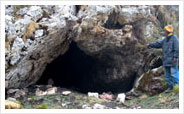 We know enough of the glorious history Province, especially if we talk about the Battle of Junín, Ayacucho seal with which the independence of Peru. Junín But not only has history as its past goes back thousands of years ago and this is not written in the books, we call it prehistory of Junín, which is still shrouded in the darkness of time. We know enough of the glorious history Province, especially if we talk about the Battle of Junín, Ayacucho seal with which the independence of Peru. Junín But not only has history as its past goes back thousands of years ago and this is not written in the books, we call it prehistory of Junín, which is still shrouded in the darkness of time.
We archaeologists since 1970 we have been working in this place that we are committed to discover the prehistory. This research task is part of the Archaeological Project of the National University Mayor de San Marcos in agreement with the University of Michigan EE.U.U, including the team of various specialists such as geologists, ethnologists, ethnobotanists, zoologists and other experts who cooperate with archaeologists. This joint work is a product which in passing below:
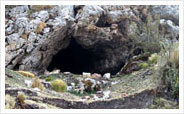 We do not know exactly when the first humans arrived in the Junín highland, but we can say something 8.000 years before Christ, the man lived in caves Junín around the lake and the slopes of some streams. The modern method of carbon-14 dating has enabled us remains pre-ceramic cultural strata of the cave Pachamachay (San Blas), and she throws a length of about 9.000 years before Christ. At present we are calling "The Pre-ceramic Time" which lasts until 1.800 years A. C., during which first appeared in the ceramics department of Junín, because we want to explain roughly how people lived from the time Pre-ceramic. We do not know exactly when the first humans arrived in the Junín highland, but we can say something 8.000 years before Christ, the man lived in caves Junín around the lake and the slopes of some streams. The modern method of carbon-14 dating has enabled us remains pre-ceramic cultural strata of the cave Pachamachay (San Blas), and she throws a length of about 9.000 years before Christ. At present we are calling "The Pre-ceramic Time" which lasts until 1.800 years A. C., during which first appeared in the ceramics department of Junín, because we want to explain roughly how people lived from the time Pre-ceramic.
In principle were hunters of animals such as vicuña, guanaco, llama, taruca, vizcacha and possibly some fish and birds of the lake and rivers in the area.
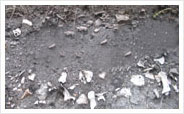 As evidence that these animals have bones and stone tools with which they hunted, including typical scrapers and spear points made of flint that abound in the area, all found in these strata for this period. By the size of the caves that we lived in small groups of up to four families may not have any kind of social stratification or specializing in the production that is because it is groups that auto supply to survive in constant struggle with nature. In this way these people lived for a little over 4.000 years, only to usher in a new way of life. As evidence that these animals have bones and stone tools with which they hunted, including typical scrapers and spear points made of flint that abound in the area, all found in these strata for this period. By the size of the caves that we lived in small groups of up to four families may not have any kind of social stratification or specializing in the production that is because it is groups that auto supply to survive in constant struggle with nature. In this way these people lived for a little over 4.000 years, only to usher in a new way of life.
Roughly 2.000 years A.C. these people slowly began a new lifestyle, starting with some tame camels and llamas and alpacas, and to cultivate some plants such as potato (Maun and Shiri) MACA and other tubers.
It is at this time that it makes its appearance in Junín ceramics and it marks the beginning of the period we call "Training", this was the basis for future civilizations that have continued after this time. The format that people started living in houses with circular tracks instead of caves, but also left traces of their ancient customs pre-ceramic because some are still using stone tools is also sure that these people continued to hunt, but in smaller amounts. We know that while there were exchanges between different regions, as pottery styles found here are similar to other important sites of this time including Kotosh in Huanuco, Atalla in Huancavelica, Ayacucho Huarpe in and with some sites on the coast central. Later in bloom this time of the great temple Chavín of Huantar, although we have no evidence of sites like this in Junín know that these people lived in towns or villages and is sure to have a more advanced than the pre-ceramic possibly lineages. It is also possible that at this time made its appearance organized religion but we have no evidence of this to Junín.
A DARK TIME
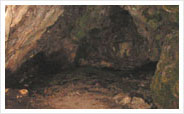 The explanatory ends more or less in the first century A. C., and then begins a time for a little dark in the Junín highlands. In other parts of Peru is the time after the Early Intermediate and Middle Horizon in this area hardly known but there are enough sites to say that the region was not idle. The problem is that we do not yet know how these people lived in this period, the Middle Horizon is known in Peru as the dominance of large Wari and Tiahuanaco Empire, but we still have no Junín clear evidence of such domination. The explanatory ends more or less in the first century A. C., and then begins a time for a little dark in the Junín highlands. In other parts of Peru is the time after the Early Intermediate and Middle Horizon in this area hardly known but there are enough sites to say that the region was not idle. The problem is that we do not yet know how these people lived in this period, the Middle Horizon is known in Peru as the dominance of large Wari and Tiahuanaco Empire, but we still have no Junín clear evidence of such domination.
In the 800 years after Christ there is again evidence of large human populations in the vicinity of Junín. This period is called Late Intermediate known because in this period, dominating the region's tribes of Peru and the Chancas Wancas, these groups lived in small towns are almost always located at the top or crest of the hills. This is interesting because these cities are far from water sources and agriculture. We believe that lived in these hills for defensive reasons as there are large walls that give reason to defend this interpretation. But those who were afraid? First, there were probably many wars between warlords who were heads of lineage groups seeking domination of one over the other, something like feudalism in Europe. Second, at the end of this period these groups began to feel afraid of the great Inca Empire that began their conquests to the north side of its base Cuzco. But these strengths are as a shelter for eagles nest, were not sufficient to the great strength of the Incas that after a fierce resistance and heroism were conquered and brought to this great Empire.
ARRIVAL OF THE INCAS
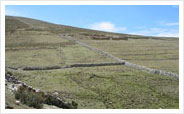 With the arrival of the Incas has changed the lives of different groups in Junín, instead of many cities in the tops of the hills; the Incas held a large city north of Lake Junín called Tambo Inca. He also built the Royal Road of the Incas that went through the top to the west side of Lake and then Old Huanuco to the north. Yet one can see traces of this fantastic journey into the flat on the west side of Lake Junín. At several points along the way still square buildings that are drums used to the rest for the travelers and the Inca: Probably the people of this region had to live in these cities to serve the Inca for much of his life, but existence in the area for herders and farmers still continue as in the past. The people of these places had very small territories which are not likely to become part of the Inca state. With the arrival of the Incas has changed the lives of different groups in Junín, instead of many cities in the tops of the hills; the Incas held a large city north of Lake Junín called Tambo Inca. He also built the Royal Road of the Incas that went through the top to the west side of Lake and then Old Huanuco to the north. Yet one can see traces of this fantastic journey into the flat on the west side of Lake Junín. At several points along the way still square buildings that are drums used to the rest for the travelers and the Inca: Probably the people of this region had to live in these cities to serve the Inca for much of his life, but existence in the area for herders and farmers still continue as in the past. The people of these places had very small territories which are not likely to become part of the Inca state.
NEED TO PRESERVE THE HISTORY
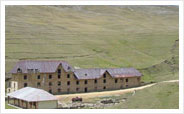 The duration of the Inca Empire were less than 100 years since the Spanish arrived in 1534 and these joined with Huancas allies to end the domination of the Incas in this region? Also with the arrival of the Spaniards finished the prehistory of this region, because after this is history and study material for historians. The duration of the Inca Empire were less than 100 years since the Spanish arrived in 1534 and these joined with Huancas allies to end the domination of the Incas in this region? Also with the arrival of the Spaniards finished the prehistory of this region, because after this is history and study material for historians.
This summary is a summary of what we know about the archeology of Junín. With our work in the coming years we will understand more of the glorious past of this province. But there is great danger that can derail any future archaeological work in this province. This danger comes from the popular belief that there are hidden treasures in the ruins of the prehistoric peoples of the region. Finding this treasure, little by little the people can destroy the evidence we have of the past, you cannot dig the same site twice - once dug it is destroyed. The truth is that the prehistoric people of this region never had much gold, nor had much interest in it because their herds were his treasure and croplands. The Treasure of an archaeological site is information that can be drawn about how these people lived in times past, and this can only do archaeologists digging in a scientific manner.
|
| |
| Back... |
|
|

